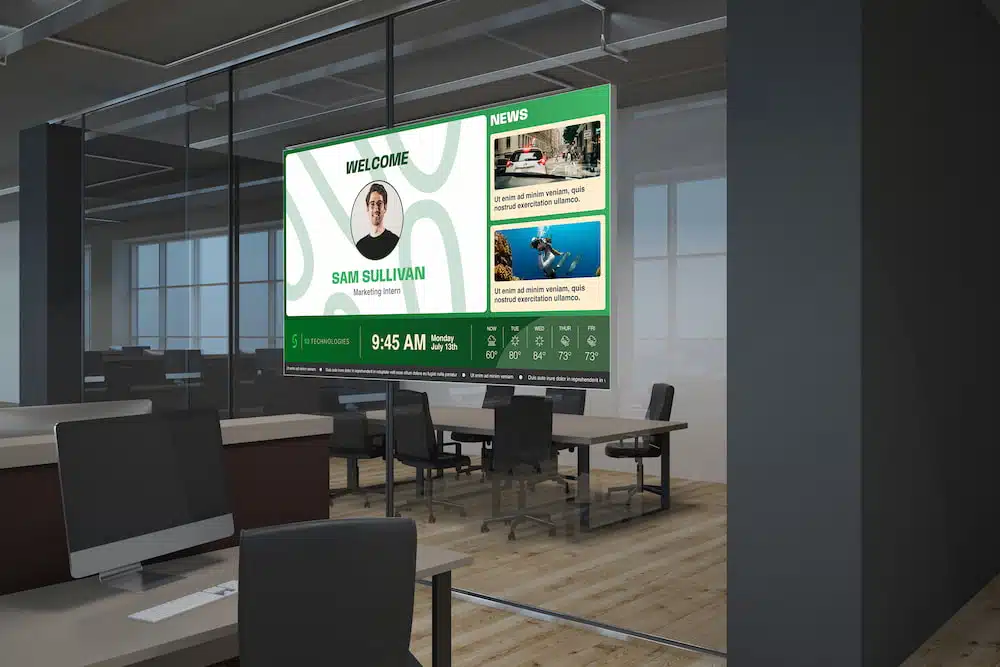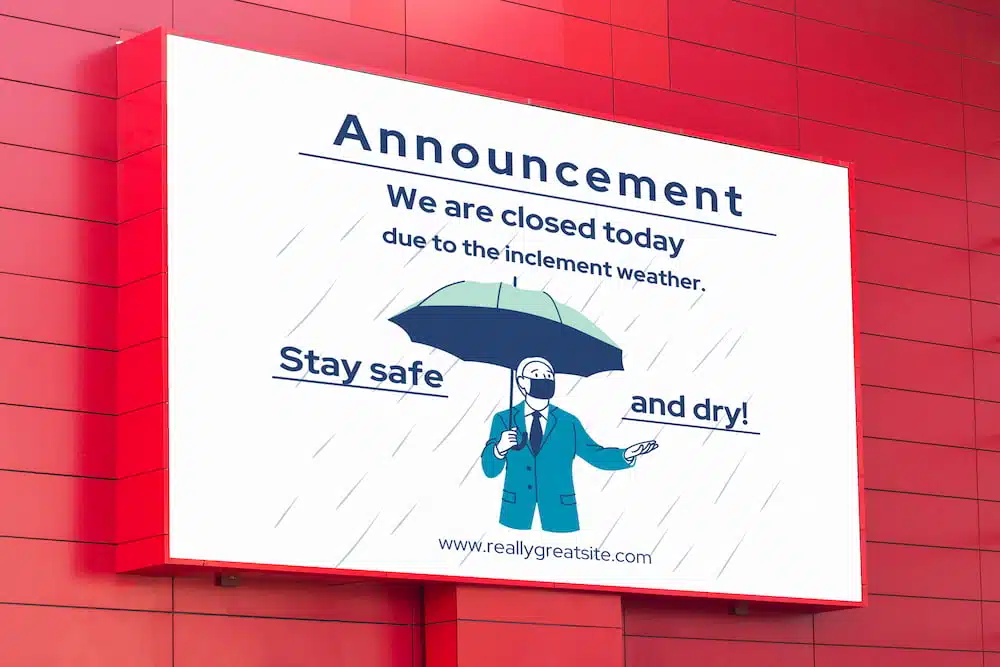
Improving Warehouse Productivity with Warehouse Digital Signage
Discover New Possibilities! Click Here to Download Your Free eBook Today and Unlock Expert Insights! Communication is critical in a …

Discover New Possibilities! Click Here to Download Your Free eBook Today and Unlock Expert Insights!
Digital signage refers to electronic displays that show dynamic multimedia content, such as videos, images, and text. These displays can be found in a variety of settings, including retail stores, restaurants, airports, and corporate offices. Digital signage has become increasingly popular over the years because it allows businesses to deliver targeted, engaging content to their customers and employees.
Choosing the right digital signage solution provider is critical to the success of your digital signage strategy. With so many providers to choose from, it can be challenging to know where to start.
This article will provide tips for choosing the right digital signage solution provider. By following these tips, you’ll be able to find a provider who can help you achieve your digital signage goals and deliver engaging content to your audience.

The first step in choosing the right digital signage solution provider is to identify your needs. Determine the purpose of your digital signage and define the goals you want to achieve with it. Consider the type of content you want to display, such as advertisements, news feeds, or social media updates. This will help you find a provider that can meet your specific needs and help you achieve your goals.
Once you’ve identified your needs, the next step is to research potential providers. Use online resources to find potential providers, and read customer reviews and case studies to learn more about their capabilities and reputation. Check the provider’s website and social media profiles to get a sense of their brand and values.
When evaluating potential providers, look for those with a solid reputation and industry expertise. A provider with a proven track record in the industry is more likely to provide a quality solution than a new or inexperienced provider. You should also consider whether the provider has experience working with businesses in your industry or with similar digital signage needs.

When choosing a digital signage solution provider, it’s important to evaluate its capabilities. This includes both hardware and software capabilities. Look for providers that offer a range of hardware options, such as display screens, media players, and mounting hardware, to ensure that you can find the right solution for your needs.
Software capabilities are also important. The provider should offer a user-friendly interface for managing your digital signage content and should be able to support a range of media formats, including images, videos, and live streams. Look for providers that offer customization options, such as the ability to create custom templates and themes, to ensure that your digital signage reflects your brand.
Training and support services are also important when evaluating a provider’s capabilities. Look for providers that offer training and support services to help you get started with your digital signage solution and troubleshoot any issues that may arise.

Digital signage is often just one part of a larger marketing or communication strategy. It’s important to choose a provider that can integrate with other systems you use, such as content management systems or social media platforms. This will help you to streamline your marketing and communication efforts and ensure that your digital signage is consistent with other aspects of your brand.
Scalability is another important consideration when evaluating a provider’s integration capabilities. Look for providers that offer scalable solutions that can grow with your business over time.

Finally, when choosing a digital signage solution provider, it’s important to evaluate their customer support options. Many providers don’t provide support. Look for providers that offer a range of customer support options, such as phone, email, and chat support, to ensure that you can get help when you need it. Check the provider’s response time and resolution time to ensure that they can provide timely support if issues arise.
Consider the provider’s knowledge and expertise in digital signage as well. Look for providers that have a deep understanding of the industry and can provide expert advice on best practices for managing your digital signage solution.

Selecting a digital signage solution provider that suits your needs can be a challenging endeavor. But, following the tips outlined in this article, you can make an informed decision.
S3 Technologies is a cut above the rest when it comes to choosing the perfect provider for your digital signage needs. S3 Technologies is a trusted technology specialist serving Northeast Ohio, dedicated to solving individual business challenges and creating value for our clients.
With over a decade of expertise and a committed team, S3 delivers comprehensive technology solutions from concept through installation and ongoing support. Our portfolio includes a range of projects spanning security, audio-visual, networking, and emerging technologies, all with a steadfast focus on trust and consistency. We take pride in serving our community by working with educational and government centers, local and national businesses, senior living facilities, and various commercial and industrial applications.
If you’re in the market for a digital signage solution provider, we encourage you to consider S3 Technologies. We offer a range of hardware and software solutions to meet your specific needs and goals. Contact us today to learn more about our digital signage solutions and how we can help you achieve your business goals.

Discover New Possibilities! Click Here to Download Your Free eBook Today and Unlock Expert Insights! Communication is critical in a …

If you’re an HR or Communications leader, have you ever considered making your corporate messages hit the right note? Well, …

Digital signage health and safety helps manage staff members and can also help ensure the safety of your employees. Notifying …

When shift labor is involved, three distinct eight-hour shifts are typically worked in 24 hours. A manager is normally assigned …